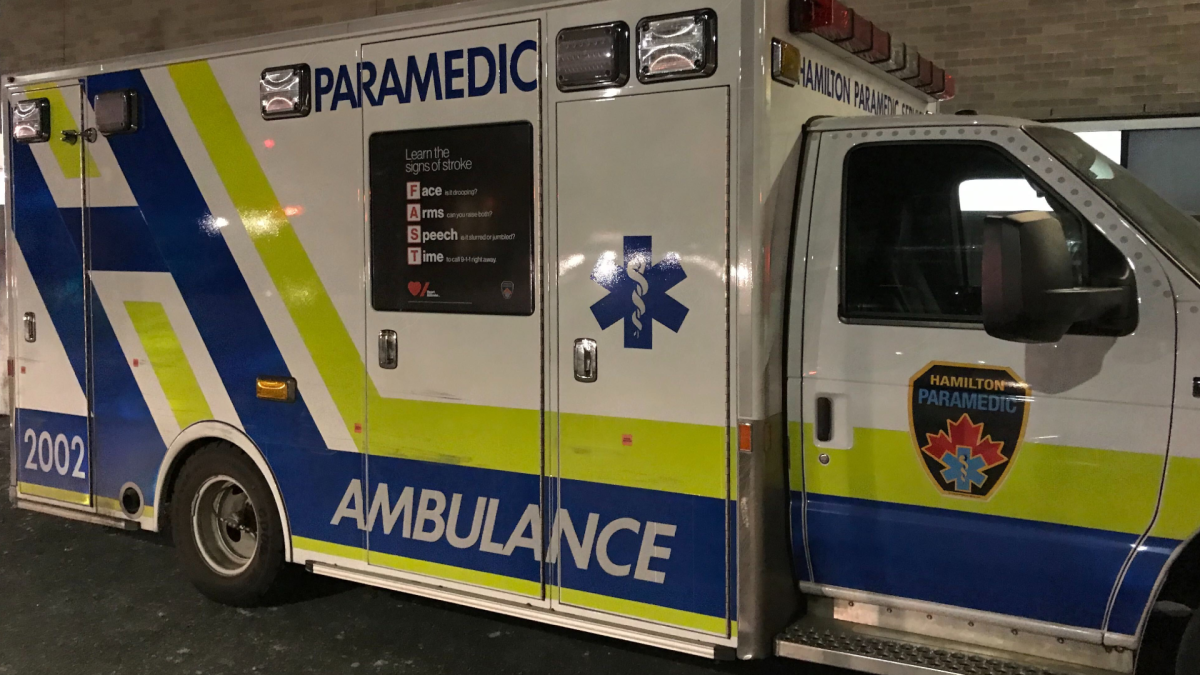Hamilton’s health care partners have given the city’s paramedics the green light to treat “stable” suspected COVID-19 patients at home amid another surge in the pandemic.

The temporary medical directive allows emergency crews to provide care and referrals to those in need at their own residence as a measure to lower emergency department visits.
“We now have the ability to do a better assessment on the scene and to leave them with better information on how to access other resources other than transporting to the hospital,” Hamilton Paramedic Service (HPS) chief Michael Sanderson told 900 CHML’s Hamilton Today.
The paramedics boss says the move likely will impact between four to eight patients of the 44 possible COVID-related calls the service is responding to daily.
As of Jan. 4, three area hospital networks said the pressure is on in local wards and emergency departments (ED) with patient admissions up and hundreds of staffers off work and in isolation with COVID-19 symptoms.
During a Hamilton Public health update on Tuesday, HHS president Rob MacIsaac confirmed the challenges continue with COVID-19 and other illnesses bumping overall hospital visits across the city.
“The result is we see very high volumes in our EDs, including an extraordinary number of patients arriving by ambulance,” MacIsaac said.
On Monday, the province announced a ramp-down of procedural and scheduled surgical care across the province, effective immediately.
The hope is to free up staff and space in local hospitals with about 8,000 to 10,000 surgeries per week in Ontario being shelved.
Sanderson said HPS is responding to an average of 266 dispatch calls a day with less than 10 per cent a life-threatening emergency.
- Canadian man dies during Texas Ironman event. His widow wants answers as to why
- ‘Sciatica was gone’: hospital performs robot-assisted spinal surgery in Canadian first
- Canadians more likely to eat food past best-before date. What are the risks?
- Invasive strep: ‘Don’t wait’ to seek care, N.S. woman warns on long road to recovery
In December, the paramedics boss said ambulance response times were getting longer due to an increase in call volumes and pressures on local hospitals.
Of concern were problems attributed to offload times at hospitals, where teams have had to make extended visits due to pressures at the drop-off point.
“Code zeros” – times when no local ambulances are available to respond to an emergency — have increased dramatically in the last six months, with 79 occurrences between July and Dec. 17, eclipsing the 20 the service had in the first six months between January and the end of June.
Current staffing with paramedics is not as dire as the city’s hospital networks with 29 HPS staff in isolation for COVID exposures as of Thursday. Thirteen workers are off with positive test results.
Under the new protocol, the HPS will transport a patient to hospital, if requested. However, Sanderson says that’s will happen after a consultation between physician and paramedic.
“We’re looking at patients that have relatively simple presentations and … a bit of mild respiratory distress that’s not significant,” said Sanderson.
The initiative hopes to make the community more aware of treatment options offered through Telehealth calls, visits to COVID Assessment Centres and virtual care doctors.
“If you’re having flu like symptoms, coughs, sniffles, going to an emergency department is not the way to go,” Sanderson said.
“Go through another process, preferably with your primary care physician.”









Comments